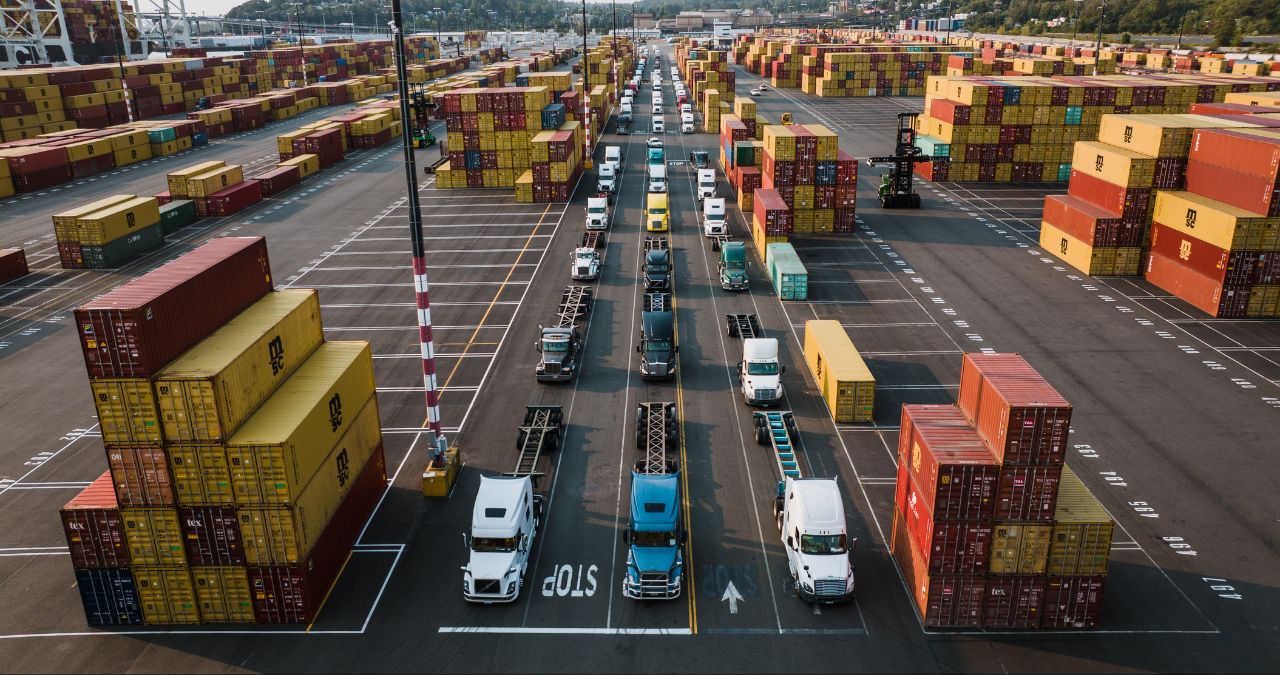
Transportation and logistics play a crucial role in the movement of goods, and two terms often encountered in this domain are freight and drayage. While closely related, these terms have distinct meanings. Understanding the difference between them is essential for anyone involved in supply chain management or the transportation industry. In this article, we will delve into the definitions of freight and drayage, explore their roles in transportation networks, and highlight the key disparities that set them apart.
What Is the Difference Between Freight and Drayage?
Freight
Freight is a term used to describe the goods or cargo that are being transported from one location to another. It can encompass a wide range of items, including raw materials, finished products, equipment, machinery, consumer goods, and more. Freight can be transported using various modes of transportation, such as trucks, trains, ships, or airplanes, depending on the distance, urgency, and specific requirements of the shipment.
When it comes to freight transportation, there are several key considerations. These include packaging and securing the goods to ensure their safety during transit, selecting the appropriate mode of transportation based on factors like cost, speed, and capacity, and arranging for the necessary documentation, such as bills of lading or airway bills, to accompany the shipment.
Freight transportation plays a crucial role in global trade and supply chain management, facilitating the movement of goods between manufacturers, suppliers, distributors, and end consumers.
Drayage
Drayage, a term closely related to freight, refers to the transport of goods over relatively short distances, typically within the same metropolitan area or port. It involves the movement of freight between a port, rail yard, or other transportation hub to a nearby warehouse, distribution center, or final destination. Drayage services are often necessary to bridge the gap between different modes of transportation or facilitate the transfer of goods from one carrier to another.
Drayage can be essential in intermodal shipping, where multiple modes of transportation are used to move freight efficiently. For example, when containers arrive at a port, drayage services may be required to transport them from the pier to a nearby rail yard for further transportation by train. Similarly, drayage services may be needed to move containers from a rail yard to a local warehouse or distribution center, where the goods can be unloaded, sorted, and prepared for further distribution or storage.
The term “drayage” has historical origins, referring to the use of horse-drawn carts (called drays) for short-distance transport of goods. While the mode of transport has evolved to trucks and other vehicles such as drayage trucks and chassis trucks, the concept remains the same: moving goods over relatively short distances to connect different parts of the transportation network.
Types of Drayage Services
Within the realm of drayage, there are several specialized services that cater to specific needs.
Intra-carrier Drayage
Intra-carrier drayage involves the movement of goods between different facilities or locations within the same carrier’s network. This ensures smooth operations and efficient transfers within the carrier’s infrastructure.
Inter-Carrier Drayage
On the other hand, inter-carrier drayage focuses on the movement of goods between different carriers or transportation companies. This type of drayage is crucial in cases where multiple carriers are involved in transporting goods from origin to destination. It facilitates the seamless transfer of goods between carriers, ensuring that the cargo reaches its final destination without delays or complications.
Shuttle Drayage
Another important type of drayage is shuttle drayage, which involves frequent back-and-forth trips between two or more locations. This service is commonly utilized when goods need to be transported between multiple destinations or when there is a need for continuous movement of goods within a specific area.
Door-to-Door Drayage
Door-to-door drayage is a specialized service that ensures the entire transportation process, including the drayage and cartage, is seamlessly managed from the pick-up location to the final destination. This comprehensive service provides convenience to shippers by eliminating the need for coordination with multiple service providers and streamlining the logistics process.
Freight vs Drayage: What are the Differences?
The primary difference between freight and drayage lies in the scope and distance of transportation. Freight is a general term encompassing goods or cargo being transported, regardless of the distance or mode of transportation. It refers to the overall movement of goods from one location to another, whether it involves short or long distances and regardless of the specific transportation method employed.
Drayage, on the other hand, is a specific type of freight movement that focuses on short-distance transportation, typically within a local area or between transportation hubs. Drayage services are utilized to move goods over short distances to connect different parts of the supply chain, such as ports, rail yards, and warehouses. It is often part of a broader freight transportation process, ensuring the smooth transfer of goods between different carriers or modes of transportation.
Unlocking the Wheels of Commerce: The Vital Roles of Freight and Drayage
Freight is a general term that encompasses any goods or cargo being transported, regardless of the distance or mode of transportation. Drayage, however, is a specific type of freight movement that focuses on the short-distance transportation of goods, usually within a local area or between transportation hubs.
Nebraska Warehouse One-Stop-Shop | Technology Enabled 3PL Value-Added Services Warehouse | Freight Broker | Logistics
Nebraska Warehouse doesn’t just help to facilitate your shipments, but we are truly a one-stop-shop solutions provider. Our services include:
-
- Professional Storage Development and Management
- Quality controlled Environment
- Responsive, Personal Customer Service
- Reasonable Price
- Real Estate Development and Management
- LTL & FTL Shipping
- Refrigerated Trucking & Storage
- E-Technology Software
- Transportation Freight
- Dedicated Contract Warehousing
- 3PL Public Warehousing
- 3PL Specifications
